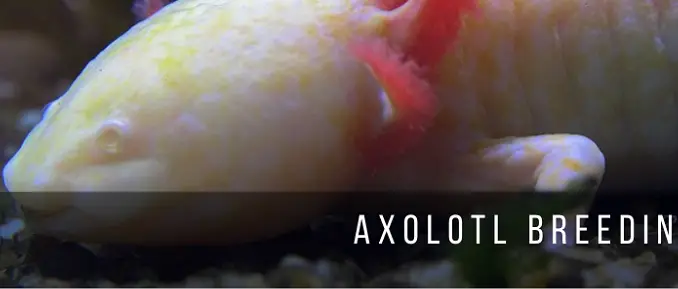
The axolotl is interesting looking fish and can make a fun little housemate in your aquarium. They are certainly striking and swim around the tank with a little smile on their faces.
We may assume axolotls are fish, however, they are actually amphibians. Amphibians start their lives in the water and gradually move onto dry land. There are two types of amphibians, ones that move onto dry land as adults, and others that stay aquatic. The axolotl is an amphibian that must stay in the water, therefore making it a quirky pick for your aquarium.
Picking axolotl for your tank is a big commitment, they aren’t usually good tank mates for other fish. This isn’t because they are aggressive in any way or cause conflict, they actually have the opposite issue.
The axolotl is timid and gentle, making them easy targets for other fish. Even the most gentle of fish will find themselves taking a bite or two out of the axolotls’ gills, or irritating them in one way or another. Keep in mind that axolotls are awake during the night and sleep in the day, so they could just as easily make a meal out of your sleeping fish as they have no problem with eating live food.
To avoid any conflicts or distressed fish, stick to an axolotl-only tank if you do go forward and have them as aquatic pets. Get some luscious aquarium plants that are colorful and attractive and enjoy the unique setup of your tank.
Before we get into the nitty-gritty of how to breed axolotls, let’s get to know these fascinating aquatic creatures. Here are 10 axolotl fun facts.
- Axolotl can regrow damaged organs and amputated body parts. They can even regrow parts of their brain and heart.
- It is sometimes referred to as the ‘Mexican walking fish’.
- Axolotl isn’t fish at all, they are amphibians that stay in a larvae-like state all their lives. Amphibians usually move from water to land once they hit a certain level of maturity, axolotls however never do.
- Axolotl may be able to regrow limbs, however, they can only grow the same limb up to 5 times. After that, the limb or organ will never regrow.
- The axolotl is 1000 times less likely to develop cancer than you or me.
- Because axolotl does not chew their food, they need something that will help grind their prey down. That is where the substrate comes in. Axolotl sucks up their food and the sand acts as ‘teeth’ chewing and grinding down the food for them.
- Axolotl males nudge the female with their nose when they are courting. If a female is responsive, she will allow the male to guide her to his sperm sacks for collection.
- The feathers you see sprouting from their heads aren’t feathers at all, those are their gills.
- The axolotl is edible and was once a delicacy in Xochimilco. According to historical writing, it tastes much like an eel. Nowadays you won’t find them on many menus due to them being classified as an endangered species.
- In the wild the axolotl is dark, it is extremely rare to spot a light-colored one in their natural habitat.
TABLE OF CONTENTS
- Where Are Axolotl Found in the Wild?
- What Makes Axolotl So Special?
- Axolotl and Egg Laying
- When Is An Axolotl Old Enough To Mate?
- How Often Can You Breed Axolotl?
- Tank Conditions For Breeding Axolotl
- Identifying if Your Axolotl is Male or Female
- Do Axolotl Change Gender?
- What to Do With Axolotl Once Eggs Have Been Laid
- How To Look After Axolotl Larvae
Read Related Article: Glow Fish Breeding
Where Are Axolotl Found in the Wild?
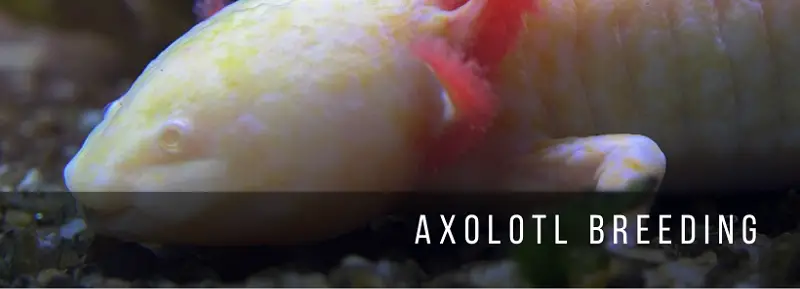
Unfortunately, axolotls are very rarely seen in the wild. They are officially classified as an endangered species. There are a few reasons for this, the main one is that they are only found in the wild in the Mexico lake complex close to New Mexico.
In 2019, it was estimated that there are roughly 1,200 axolotls in the wild. That is only a fraction of the estimated number of 6,000 back in 1998. This is a worrying reality for the amphibian and one that has to be closely monitored.
Another reason for the lack of sightings could be because they are nocturnal and are very private. They certainly don’t need much company to be happy and you won’t find them huddling in big groups. Axolotl love to hide between plants and rocks whenever they can.
What Makes Axolotl So Special?
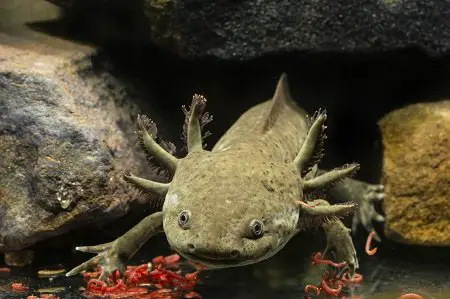
The axolotl is part of the Salamander family, their ‘magic power’ is that they can re-grow complete lost limbs. This fascinates scientists and is one of the reasons that axolotl are so closely monitored in scientific labs all over the world and in the wild.
It doesn’t stop at limbs, salamanders can also regrow eyes and spinal cords. We, humans, find this unfathomable because we react so differently to injury.
Axolotl and Egg Laying
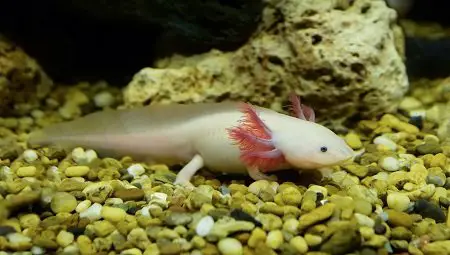
The axolotl is egg-laying amphibians. The male and female court, resulting in the male depositing his sperm sacks (known as his spermatophore) on a flat textured surface. The female then collects the spermatophore, this whole process could take anywhere between an hour or two.
The fertilized eggs are only laid a couple of hours later. They are usually laid on the plants or decorations in the aquarium. Make sure the tank isn’t too bare as the female might not feel comfortable enough to participate in the mating process at all.
When Is An Axolotl Old Enough To Mate?
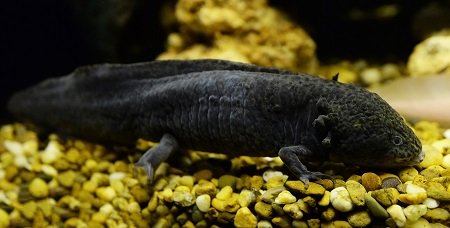
Axolotls hit sexual maturity at about 12 months old. That doesn’t mean you should mate them that early. It is wiser to wait until the amphibians are about 18 months before trying to breed them.
They could be sexually mature as young as 6 months old. So you see, age isn’t really the deciding factor, the question here is would you really want to put your pet through the mating process prematurely?
They may be sexually mature at such a young age, but they are not fully grown at that time. The best indicator is their size if they are longer than 7 inches in length they are most likely ready to breed.
If you want your axolotls to thrive then feed them correctly, keep them in a big enough tank and ensure the temperature and lighting is perfectly suited for them.
Top Tip: Sexually mature axolotls’ toe tips change color slightly. The darker axolotls tips will become a lighter shade whereas the lighter axolotls tips become a little darker.
How Often Can You Breed Axolotl?
In the wild, they breed once in 12 months. This usually happens in the early summer months. In captivity, you can breed axolotls whenever you like as long as the tank conditions are right. If you want to recreate the breeding conditions in a tank, you will need to reduce the hours of light (daytime) they are exposed to for a few weeks prior to breeding.
Once the fish have been conditioned in this way, they slowly increase the light they are exposed to bit by bit. That, along with reducing the temperature in the aquarium by a few degrees will trigger them to mate.
The tank should also be rather large with roughly 10 gallons of water per axolotl. Having a separate breeding tank for your axolotl may help as they won’t be distracted or irritated by other fish in a regular aquarium.
Not too much information is known about axolotls breeding habits in the wild because there are very hardly any records of witnessing their activities. Most of the breeding patterns that we know about are when breeding them in captivity. The good thing is that they are relatively easy to breed and don’t require any more TLC than other aquarium fish.
Tank Conditions For Breeding Axolotl
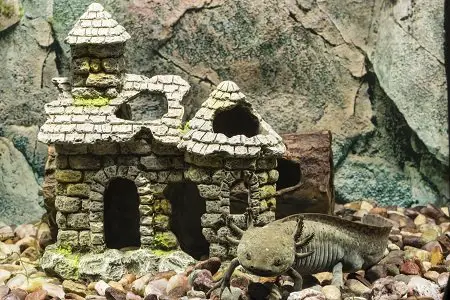
Axolotl is fussy little things when it comes to their tank conditions. They are cold-water fish, which means that they live happily in relatively cold waters below 70 degrees Fahrenheit, any more than that and they get very stressed and become ill.
The substrate is very important to them too. Although they are not technically fish, as we mentioned earlier, they are ‘bottom dwellers’ which means that they spend most of their day at the bottom of the tank.
Choosing the wrong substrate for axolotls can cause the substrate to get stuck in their bodies when it is ingested. Take gravel, for example, it has the grip and texture that axolotl desires, but they have a tendency to ingest the gravel and it doesn’t pass through their system properly, causing a massive blockage. Sand is the best substrate for them, it is fine enough to pass easily through their bodies and is the perfect texture for them to hold onto.
Your axolotl breeding tank should be kept in a room that isn’t affected by natural seasonal temperatures or conditions. So that means completely out of sunlight and in a room that can be temperature controlled. Males also have some special breeding requests, they require a flat rock for their sperm pockets. Without a flat rock, the sperm will not stay in one place and will impede the success of the breeding process.
The axolotl is sensitive to water changes during the breeding season and therefore it is best not to change their water while they mate. Keeping the tank temperature low and consistent while the mate is very important.
Here is a list of questions for you to ask yourself after you have set up the tank. This will ensure nothing has been missed or forgotten:
- Is the tank large enough for all the fish? (10 gallons of water required per fish)
- Is the substrate the right texture (slightly rough aquarium sand is perfect)
- Does the tank have a good filtering system? (axolotl produce a lot of waste, especially during spawning)
- What is the water temperature? (stay below 70 degrees Fahrenheit)
- Are there some large flat rocks in the aquarium?
- Are there enough aquarium plants? (fake plants will also do the trick)
Top Tip: Plant lots of aquarium plants in the axolotl breeding tank. This will make the female feel extra cozy[ and in turn, she will most likely lay more eggs.
Identifying if Your Axolotl is Male or Female
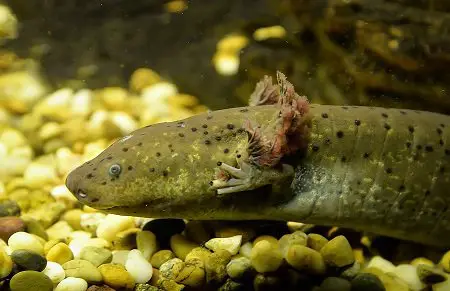
You will need to identify the sex of your axolotls before you even begin to think about preparing to condition them for breeding. It sounds like a no brainer, right? The thing is axolotls, like almost all aquatic pets, develop at their own pace. It might not be easy to distinguish a male from a female when the axolotl isn’t fully mature.
Even experienced axolotl keepers can get all the preparations right, the tank looks perfect, the water is just right, the substrate is the right thickness, and yet they still fail to breed their pet. Most of the time the failure is solely due to misidentification.
To identify the sex of the axolotl, you will need to look at their cloaca. The cloaca is the vent at the back of the salamander. A male will have a very big and swollen cloaca, the females will be much smaller, or even completely flat.
Top Tip: If you want to know if your axolotls are ready to mate, take a close look at the female’s body shape. If she appears to be swollen and puffy towards the rear end of her body, she is most likely ready to mate.
Do Axolotl Change Gender?
This is a rather controversial topic. Some people believe wholeheartedly that their axolotl has changed gender and there is just no swaying them in their opinion. The truth is, this isn’t a possibility.
The most likely explanation is that the axolotls were too young at the time of sexual identity and therefore not fully developed causing some confusion. This goes back to what I mentioned earlier, waiting until the axolotl is large enough before getting involved in any sexual identification or breeding is the best approach.
What to Do With Axolotl Once Eggs Have Been Laid
These timid and gentle amphibians aren’t so timid and gentle when it comes to their own eggs. If you keep the axolotls and their eggs in the same tank, the eggs will most likely be eaten.
You can either remove the eggs or the adults from the tank, it doesn’t particularly matter. Axolotl eggs are rather hard and can take a bit of manhandling. I suggest moving the adults to their regular tanks rather than disturbing the eggs.
Axolotls need a lot of space, so if you simply don’t have enough room for a 20-gallon breeding tank as well as the large tank required to house the axolotls, moving the eggs to a smaller tank will be a better option for you. Here are a few tips to remember when you remove the eggs from the breeding tank:
- You can remove the eggs by gently scraping them off the rock they are attached to.
- If you can move the whole rock without disturbing the eggs then that is an even better option.
- More often than not the eggs will be attached to the plants, do not try to remove the eggs off the plant.
- Move the plant to the smaller tank without disturbing the eggs.
The eggs will hatch faster and do a lot better if they are kept in an aquarium that is about 72 degrees Fahrenheit. This temperature is higher than what the adults like, another reason to keep the eggs separate from the adults.
Be mindful of the fact that the eggs will hatch much slower if you do not adjust the water temperature. Eggs kept in cold water can hatch about 7-8 days later than eggs kept in warmer waters.
It is unknown if the quality of the larvae will be any better or worse depending on the water temperature that the eggs are kept in. It is, however, good for you to know that the process can be sped up a little bit.
How To Look After Axolotl Larvae
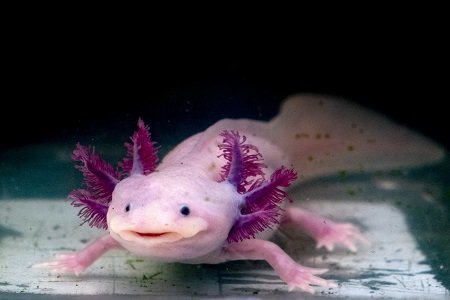
Axolotl larvae are just as peculiar-looking as adult axolotl. They are about 0.5 inches long when they hatch and will not move for the first 2 to 3 days. This is because they have some egg yolk still in their stomachs that they feed off for the first 46-72 hours of their hatched lives. Do not be alarmed by their lack of movement, the worst thing you could do is assume they didn’t survive and dispose of them.
Once the larvae start to wriggle about this is a sign that they are ready for food. They must be fed only live food until they are much older. This is because their sense of smell isn’t developed and they simply won’t realize the dead food is actually something that they can eat. This can be tricky. How are you meant to find live food small enough for the larvae to eat?
Moina and newly hatched brine shrimp are the ideal small live foods for the newly hatched larvae. Anything else may be hard for them to catch until they start to develop legs.
If you are unsure if another live food option is appropriate for the larvae, check with the pet store before making a purchase. Failing to provide the larvae with the right food can result in them eating each other. Not what we were going for!
Read Related Article: Breeding Corydoras

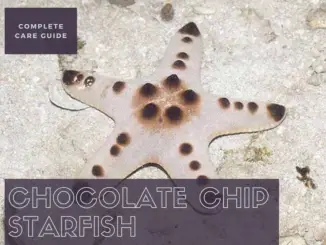
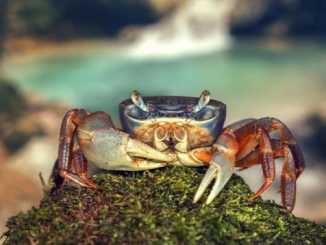
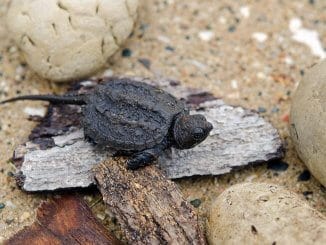
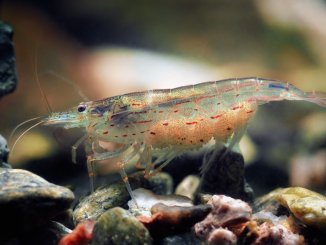
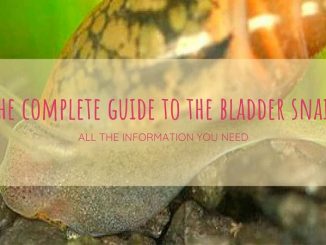
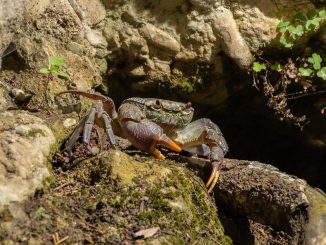
Thank you for posting this article on proper breeding techniques for the Axolotl. 5 Stars. By Gregg L. Friedman MD
So it seem that Axolotls are very sensitive creatures. Would touching them gently with hands, tools or nets harm them? My next question is can you keep young baby Axolotls together in a tank when they hatch. What point to you move them and separate them? Last questions is what’s the best way to care for a Axolotl which is regrowing a limb, organ, etc. Is there medicine or foods that could help the process?
Hey there! I’ll answer all 3 questions
1. Yes, touching the axolotl may harm their slime coat but as long as you’re careful, wash your hands and touch them infrequently, they should be fine.
2. Also yes, keeping them together should be fine until they are about two or three inches, and then it may be best to put them in separate tanks or get larger tanks to encourage growth.
3. The best way is black tea baths, this helps with fungal infections and did miracles for my two legged axolotl, he now has all four limbs. :)